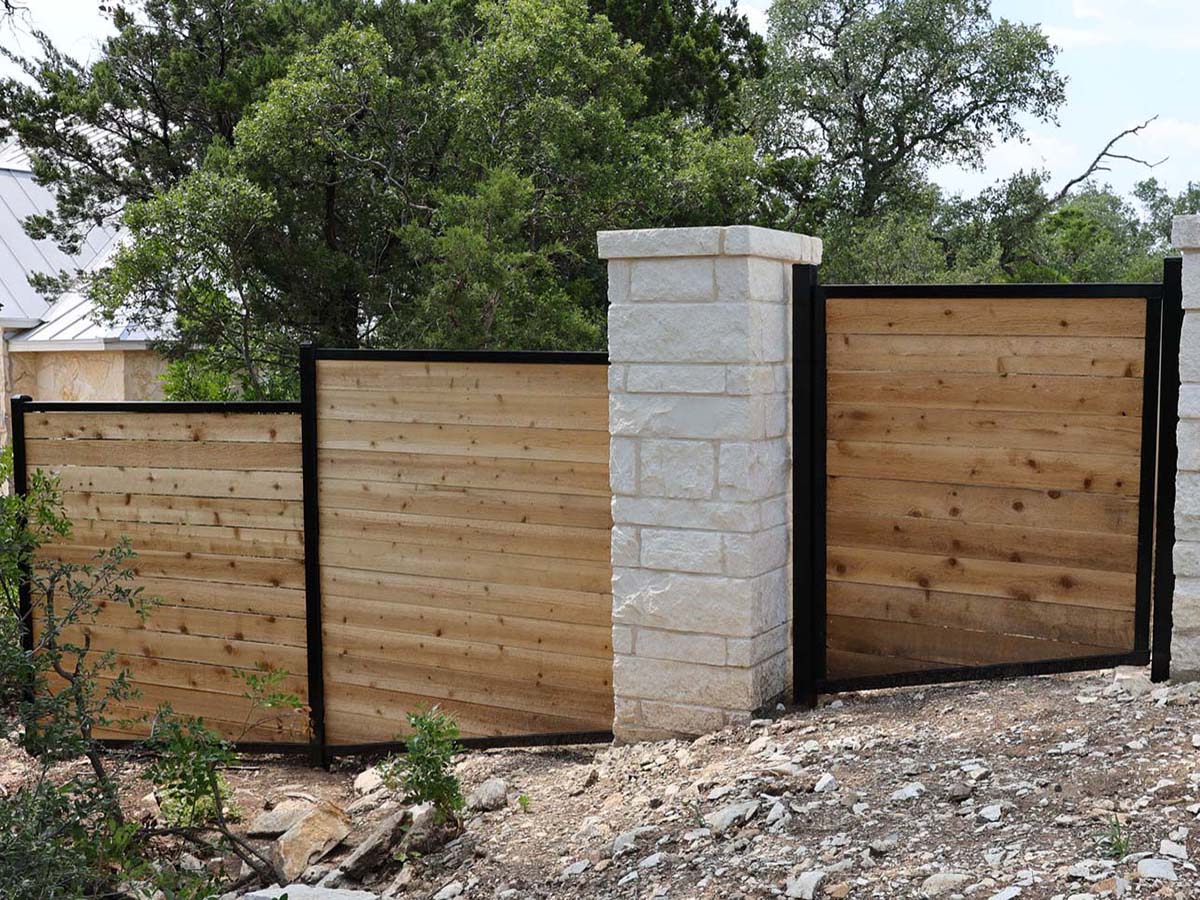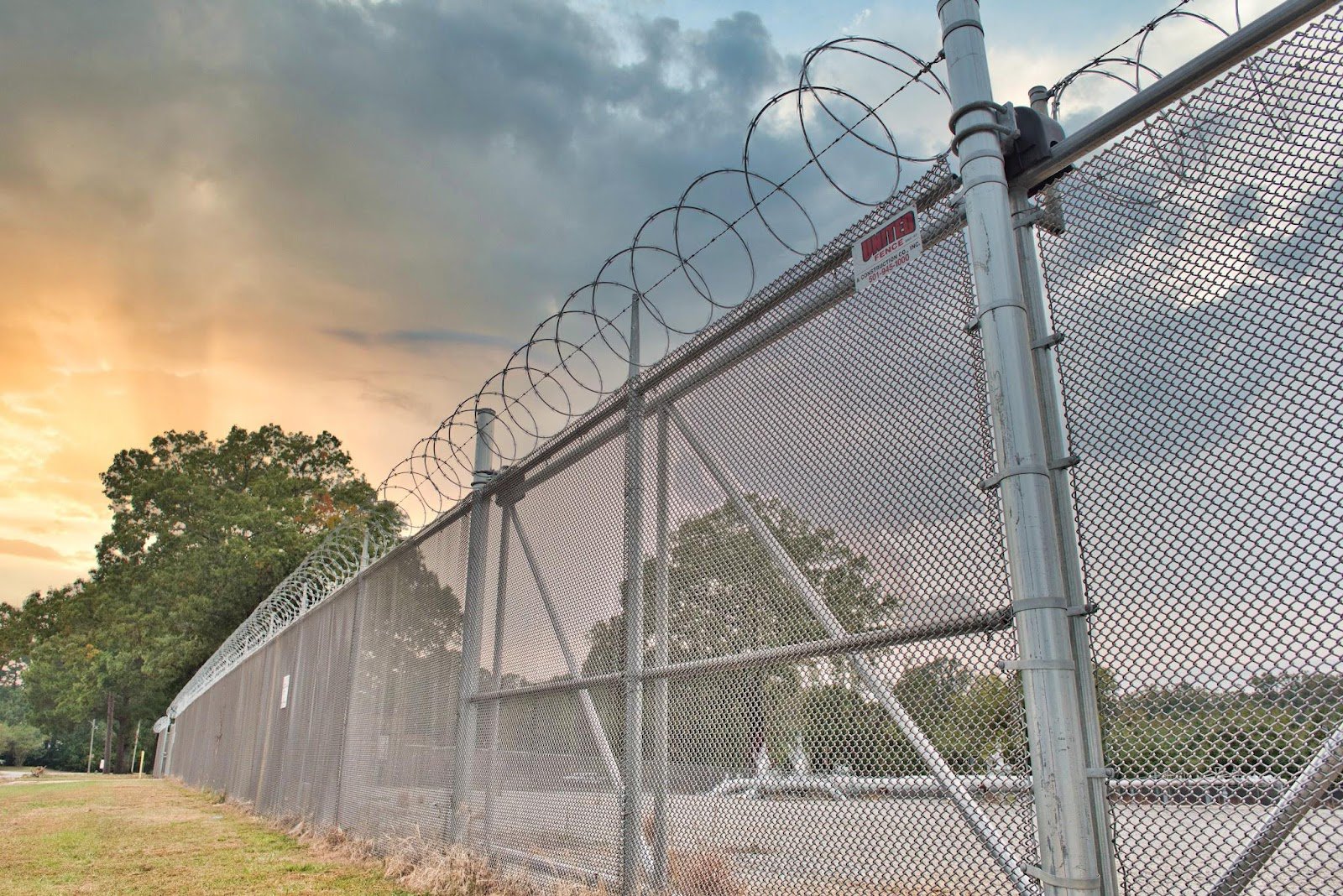Featured
Preserving your fence is vital to guarantee its look, long life, and performance. Whether your fence is made of wood, plastic, steel, or various other materials, recognizing its treatment requirements will certainly help keep it in optimum condition.
![]()
Cleansing: Use a pressure washer or soapy water with a soft brush to get rid of algae, mold, and dust. This need to be done each year or biannually. Staining and Sealing: Apply a sealant or discolor every 2-- 3 years to stop dampness damages and UV fading. Pick a top notch item suitable for outdoor use. Repair work: Replace deformed, decomposed, or fractured boards asap to avoid further damages. Bug Management: Treat with a timber chemical to safeguard versus termites and other parasites. 2. Plastic Fencings. Vinyl fences are prominent for their low-maintenance nature but still need some upkeep.
Cleaning: Laundry the fencing with a blend of water and moderate detergent using a soft sponge or cloth. Avoid unpleasant cleansers that might damage the surface. Evaluations: Inspect for voids or splits occasionally, particularly after storms. Vinyl can come to be weak in extremely winter. Avoiding Staining: Remove discolorations without delay. For hard discolorations, utilize a vinegar service or a vinyl-safe cleaner. 3. Chain-Link Fences. Chain-link fences are long lasting and functional, often made use of for security and border marking.
Rust Removal: Inspect for rust regularly, specifically in seaside or humid locations. Remove rust with a wire brush and apply a rust-proof coating. Cleansing: Wash with water to eliminate dust and particles. Use a scrub brush for areas with hefty build-up. Tightening up and Repairs: Guarantee the posts and links remain limited. Change harmed areas or equipment as needed. 4. Wrought Iron Fencings. Wrought iron provides a classy look but needs regular interest to stop rust and maintain its finish.
Corrosion Avoidance: Sand off any type of rust places and apply a rust-resistant primer and paint. This should be done yearly or as required. Cleaning: Use a mild soap remedy and a soft fabric or sponge to get rid of dirt. Prevent severe chemicals that can harm the metal. Paint: Reapply paint every few years to shield the iron and enhance its appearance. 5. Light weight aluminum Fences. Light weight aluminum fencings are lightweight, corrosion-resistant, and need minimal care.
![]()
Cleaning: Usage soapy water and a cloth to clean up the fence, rinsing extensively to avoid streaks. Examinations: Examine for loose screws or panels periodically. If required, protect or replace parts. Touch-Ups: Usage paint made for aluminum to cover any type of scrapes or chips, securing the metal below. 6. Compound Fences. Composite fencing is constructed from recycled products, combining the look of wood with higher durability.
Cleansing: Rinse with water and use a light cleaning agent to remove dust and stains. Prevent abrasive devices that might harm the composite surface. Inspections: Try to find indicators of warping or breaking, particularly in areas with severe temperature modifications. Build Prevention: Tidy mold and mildew or mildew without delay with a blend of water and white vinegar. 7. Bamboo Fences. Bamboo fence is green yet a lot more delicate than various other materials.
Cleaning: Use a soft brush with soapy water to tidy dirt and debris. Stay clear of using extreme water stress to stop splitting. Securing: Apply a water-resistant sealer every 2-- 3 years to protect against weather damages. Repairs: Replace broken or damaged bamboo poles as required to keep the structure and appearance. General Upkeep Tips. Trim Plant Life: Keep shrubs and creeping plants far from the fencing to stop wetness accumulation and damages. Seasonal Care: In winter months, clear snow buildup from fences to stay clear of stress on the framework. In summertime, look for sunlight damage or fading. Regular Examinations: Stroll along the fencing line regularly to inspect for loosened equipment, leaning sections, or various other signs of wear. Final thought. Despite the kind of fence material, routine upkeep is the key to protecting its function and aesthetic appeals. Wooden fences demand the most upkeep, while plastic and light weight aluminum need less initiative yet still benefit from periodic cleansing and inspections. By resolving small issues early and executing regular care, you'll delight in a fence that remains sturdy and attractive for several years ahead.

- Wood Fencings. Wood fencings are traditional yet require regular care to shield against climate and pests.
Cleansing: Use a pressure washer or soapy water with a soft brush to get rid of algae, mold, and dust. This need to be done each year or biannually. Staining and Sealing: Apply a sealant or discolor every 2-- 3 years to stop dampness damages and UV fading. Pick a top notch item suitable for outdoor use. Repair work: Replace deformed, decomposed, or fractured boards asap to avoid further damages. Bug Management: Treat with a timber chemical to safeguard versus termites and other parasites. 2. Plastic Fencings. Vinyl fences are prominent for their low-maintenance nature but still need some upkeep.
Cleaning: Laundry the fencing with a blend of water and moderate detergent using a soft sponge or cloth. Avoid unpleasant cleansers that might damage the surface. Evaluations: Inspect for voids or splits occasionally, particularly after storms. Vinyl can come to be weak in extremely winter. Avoiding Staining: Remove discolorations without delay. For hard discolorations, utilize a vinegar service or a vinyl-safe cleaner. 3. Chain-Link Fences. Chain-link fences are long lasting and functional, often made use of for security and border marking.
Rust Removal: Inspect for rust regularly, specifically in seaside or humid locations. Remove rust with a wire brush and apply a rust-proof coating. Cleansing: Wash with water to eliminate dust and particles. Use a scrub brush for areas with hefty build-up. Tightening up and Repairs: Guarantee the posts and links remain limited. Change harmed areas or equipment as needed. 4. Wrought Iron Fencings. Wrought iron provides a classy look but needs regular interest to stop rust and maintain its finish.
Corrosion Avoidance: Sand off any type of rust places and apply a rust-resistant primer and paint. This should be done yearly or as required. Cleaning: Use a mild soap remedy and a soft fabric or sponge to get rid of dirt. Prevent severe chemicals that can harm the metal. Paint: Reapply paint every few years to shield the iron and enhance its appearance. 5. Light weight aluminum Fences. Light weight aluminum fencings are lightweight, corrosion-resistant, and need minimal care.

Cleaning: Usage soapy water and a cloth to clean up the fence, rinsing extensively to avoid streaks. Examinations: Examine for loose screws or panels periodically. If required, protect or replace parts. Touch-Ups: Usage paint made for aluminum to cover any type of scrapes or chips, securing the metal below. 6. Compound Fences. Composite fencing is constructed from recycled products, combining the look of wood with higher durability.
Cleansing: Rinse with water and use a light cleaning agent to remove dust and stains. Prevent abrasive devices that might harm the composite surface. Inspections: Try to find indicators of warping or breaking, particularly in areas with severe temperature modifications. Build Prevention: Tidy mold and mildew or mildew without delay with a blend of water and white vinegar. 7. Bamboo Fences. Bamboo fence is green yet a lot more delicate than various other materials.
Cleaning: Use a soft brush with soapy water to tidy dirt and debris. Stay clear of using extreme water stress to stop splitting. Securing: Apply a water-resistant sealer every 2-- 3 years to protect against weather damages. Repairs: Replace broken or damaged bamboo poles as required to keep the structure and appearance. General Upkeep Tips. Trim Plant Life: Keep shrubs and creeping plants far from the fencing to stop wetness accumulation and damages. Seasonal Care: In winter months, clear snow buildup from fences to stay clear of stress on the framework. In summertime, look for sunlight damage or fading. Regular Examinations: Stroll along the fencing line regularly to inspect for loosened equipment, leaning sections, or various other signs of wear. Final thought. Despite the kind of fence material, routine upkeep is the key to protecting its function and aesthetic appeals. Wooden fences demand the most upkeep, while plastic and light weight aluminum need less initiative yet still benefit from periodic cleansing and inspections. By resolving small issues early and executing regular care, you'll delight in a fence that remains sturdy and attractive for several years ahead.
Latest Posts
Raise Your Brand with Cycle Advertising And Marketing
Published May 10, 25
1 min read
Explore Premier Eye Specialist Clinics in Your Area at Eye Center South
Published May 10, 25
1 min read
Discover Premier Eye Physicians Close By at Eye Center South
Published May 10, 25
1 min read
More
Latest Posts
Raise Your Brand with Cycle Advertising And Marketing
Published May 10, 25
1 min read
Explore Premier Eye Specialist Clinics in Your Area at Eye Center South
Published May 10, 25
1 min read
Discover Premier Eye Physicians Close By at Eye Center South
Published May 10, 25
1 min read